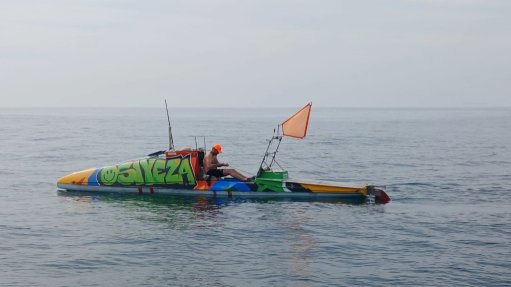UK researchers adapt astrophysics technology to look for icebergs
Lancaster University in the UK has successfully adapted artificial intelligence (AI) technology, developed to hunt for and characterise galaxy clusters deep in space, to detect and track icebergs and sea ice. The astrophysics AI algorithm was used to process satellite imagery, and could detect icebergs and sea ice on shipping routes, under any amount of cloud cover, with a success rate of 94%.
“We looked to apply our technique to areas beyond astrophysics and the vision for this project is to further develop our automated iceberg and sea ice detection system, such that it can be used as a commercial product,” explained astrophysicist Dr John Stott. The AI technique was developed by Stott and Dr Matthew Chen.
The commercialisation of the technology was being supported by a £300 000 award from the UK Science and Technology Facilities Council. This money would be used to hire a researcher and acquire top-of-the-range computing equipment, for the university’s supercomputer.
“Broadly, icebergs are pieces of ice in the sea that have broken away from a glacier and sea ice is thick ice that has formed in-situ,” elucidated Stott. “Ice that formed during the previous winter is of the greatest concern to shipping.”
Despite ships being equipped with modern radar systems, in the northern hemisphere there were still two to three incidents each year involving ships and icebergs, sometimes causing serious damage to vessels and forcing people to abandon ship. On the other hand, false alarms caused other ships to divert from their planned courses, which resulted in commercial costs.
The system developed by the researchers uses images, each of which cover a large area of the ocean, supplied by satellite-mounted synthetic aperture radars. These images are processed to identify, with a high degree of accuracy, icebergs and sea ice. The idea was that the locations of these possible dangers would be sent to UK and global maritime industry clients. These would include the shipping, fishing, cruise liner and shipping insurance sectors. The development of the commercial system will be done in collaboration with the maritime industry, to ensure that it is robust and precise, and permits real-time route planning.
Comments
Press Office
Announcements
What's On
Subscribe to improve your user experience...
Option 1 (equivalent of R125 a month):
Receive a weekly copy of Creamer Media's Engineering News & Mining Weekly magazine
(print copy for those in South Africa and e-magazine for those outside of South Africa)
Receive daily email newsletters
Access to full search results
Access archive of magazine back copies
Access to Projects in Progress
Access to ONE Research Report of your choice in PDF format
Option 2 (equivalent of R375 a month):
All benefits from Option 1
PLUS
Access to Creamer Media's Research Channel Africa for ALL Research Reports, in PDF format, on various industrial and mining sectors
including Electricity; Water; Energy Transition; Hydrogen; Roads, Rail and Ports; Coal; Gold; Platinum; Battery Metals; etc.
Already a subscriber?
Forgotten your password?
Receive weekly copy of Creamer Media's Engineering News & Mining Weekly magazine (print copy for those in South Africa and e-magazine for those outside of South Africa)
➕
Recieve daily email newsletters
➕
Access to full search results
➕
Access archive of magazine back copies
➕
Access to Projects in Progress
➕
Access to ONE Research Report of your choice in PDF format
RESEARCH CHANNEL AFRICA
R4500 (equivalent of R375 a month)
SUBSCRIBEAll benefits from Option 1
➕
Access to Creamer Media's Research Channel Africa for ALL Research Reports on various industrial and mining sectors, in PDF format, including on:
Electricity
➕
Water
➕
Energy Transition
➕
Hydrogen
➕
Roads, Rail and Ports
➕
Coal
➕
Gold
➕
Platinum
➕
Battery Metals
➕
etc.
Receive all benefits from Option 1 or Option 2 delivered to numerous people at your company
➕
Multiple User names and Passwords for simultaneous log-ins
➕
Intranet integration access to all in your organisation

















